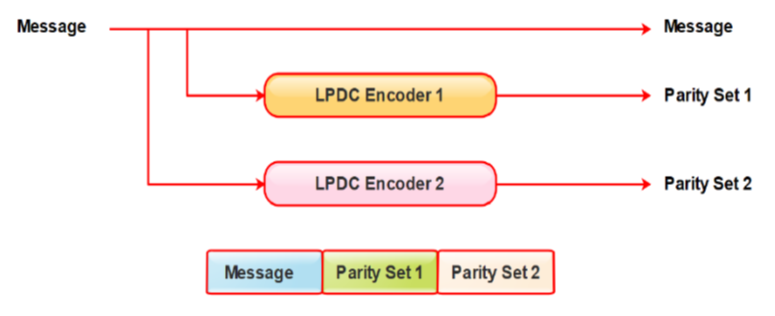


Indian Journal of Science and Technology
Year: 2021, Volume: 14, Issue: 5, Pages: 432-444
Original Article
S Chaitra1, V Rekha2*, A M Harisha3, T A Madhu4, S Mallikarjunaswamy5, N Sharmila6, H N Mahendra5
1Dept of ECE, Vivarttana Technologies, Bangalore, 560041, Karnataka, India
2Dept of CSE, SOET, Chirst (Deemed to be University), Bangalore, 560074, Karnataka, India
3Dept of ECE, Xolcano Technologies, Bangalore, 560040, Karnataka, India
4Dept of EEE, Sri Jayachamrajendra College of Engineering, Mysore, 570006, Karnataka, India
5Dept of ECE, JSS Academy of Technical Education, Bangalore, 560060, Karnataka, India
6Dept of EEE, RNS Institute of Technology, Bangalore, 560060, Karnataka, India
*Corresponding Author
Email: [email protected]
Received Date:02 December 2020, Accepted Date:01 February 2021, Published Date:16 February 2021
Objective: In the code theory, parallel concatenation of codes becomes more popular after the introduction of turbo codes. In recent years, the Low Density Parity Check (LDPC) code has found remarkable advancement and has seen them outshine turbo codes in terms of performance especially in the error floor and higher code rate. The main objective of this paper is to address the various techniques of a parallel concatenation of LDPC code in code theory. Method/Finding: To reduce the complexity of encoding and decoding for longer codes various parallel concatenation of LDPC coding methods were introduced and the performance was compared with other work. Novelty: When a longer block length is used, the parallel LDPC decoder is suffered from the complexity of prohibitive implementation. To overcome this issue and to achieve the best performance for longer codes, the different methods for parallel concatenation of LDPC codes were introduced with reduced complexity. This will helps to break the long and complex LDPC code into less complex and smaller LDPC to distribute the decoding and encoding load. Also, this will provides scalability and scope for improving the performance of LDPC codes in practical delay-sensitive and energy-aware applications.
Keywords: Parallel concatenation; LowDensity ParityCheck (LDPC); turbo codes; Parallel Concatenated Gallager Codes (PCGC)
© 2021 Chaitra et al.This is an open access article distributed under the terms of the Creative Commons Attribution License, which permits unrestricted use, distribution, and reproduction in any medium, provided the original author and source are credited. Published By Indian Society for Education and Environment (iSee)
Subscribe now for latest articles and news.